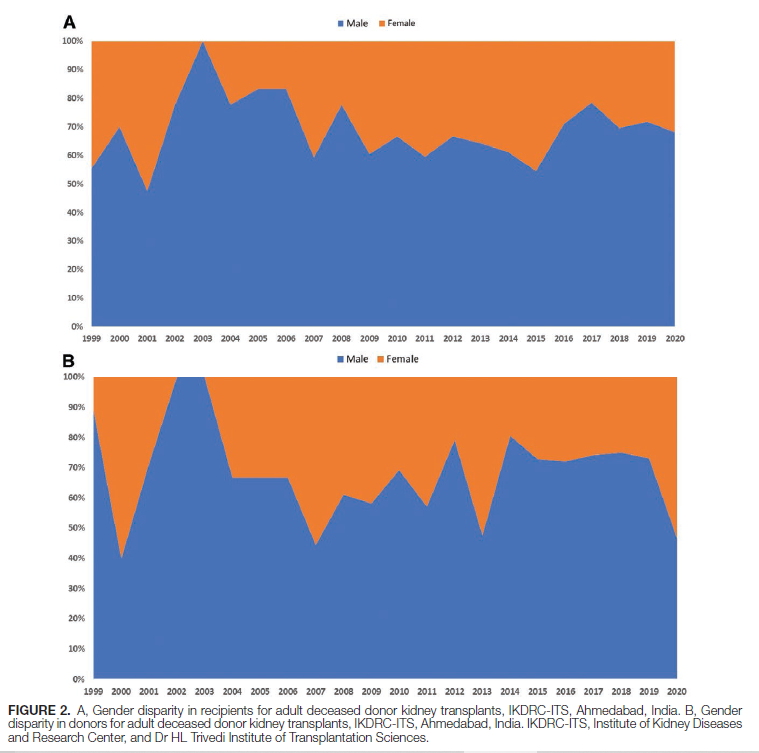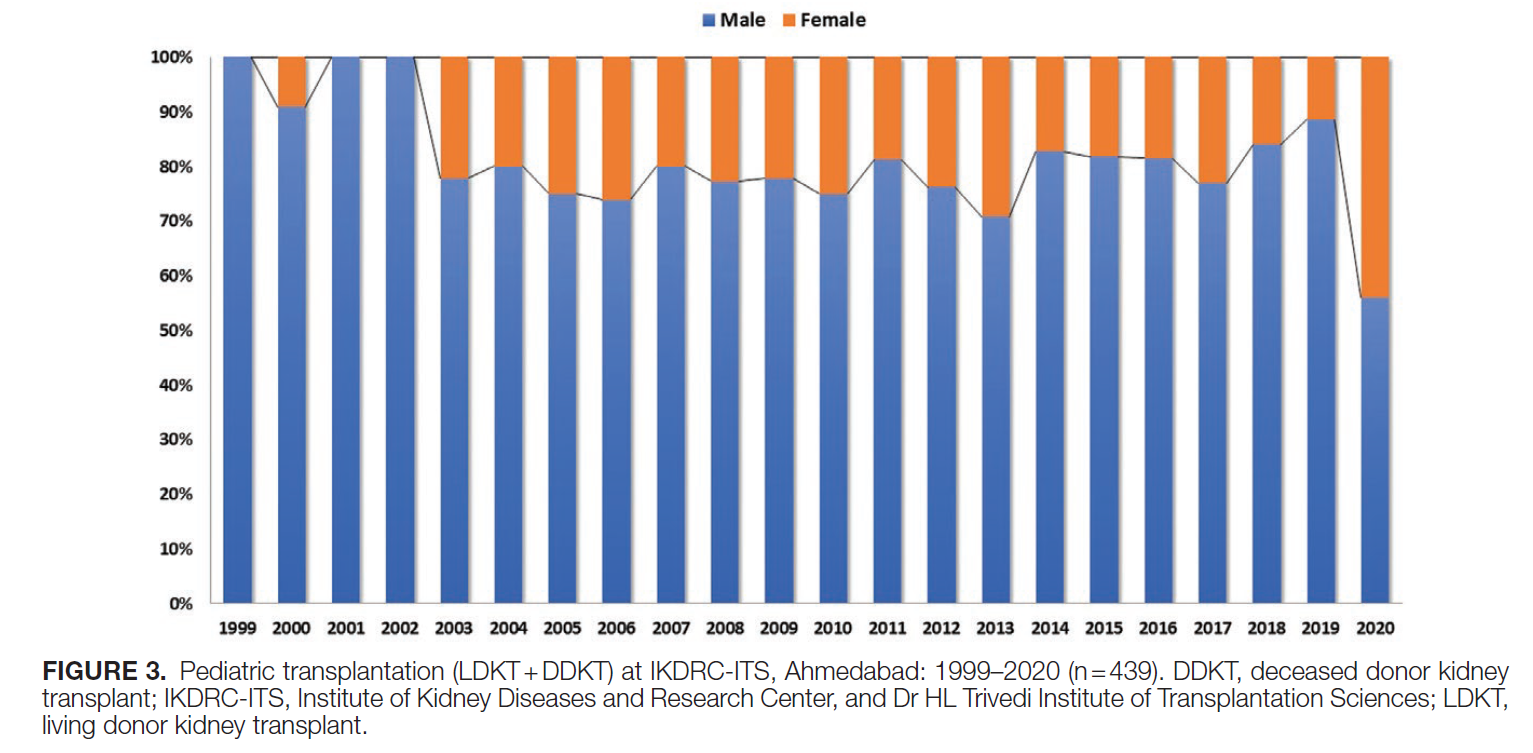Sanshriti Chauhan, India has been granted the TTS-ISOT La Renon International Transplantation Science Mentee-Mentor Awards
Impact of gender on kidney transplantation practices: a single centre report from largest public-sector transplant center of India
Sanshriti Chauhan1, Himanshu Patel1, Vivek Kute1, Sudeep Patel1, Sudeep Desai1, Vineet Mishra1.
1Nephrology and Transplantation, IKDRC-ITS, Ahmedabad, India
Introduction: There is scarcity assessing the true burden of gender disparity in organ transplantation from the developing world.
Methods: We analysed data from 1997 to March 2020, comprised of a total of 5838 kidney transplants including 943 deceased donor kidney transplants (DDKTs) in addition to 4895 LDKTs including 440 living donor kidney paired donations. We excluded the data from pandemic period to avoid bias of low transplant volume in the period.
Results: A majority of male recipients have received DDKT. Interestingly, there have, however, also been more male deceased donors (Figure 2A, 2B). Of 831 DDKT recipients between 1997 and 2018 in our center, 68% have been males and 32% females. Overall, female donors constituted 71% of the living donor pool. Female donors are most frequently mothers (33.7%), wives (20.1%), and infrequently daughters (0.4%). When parents donate, it is most frequently the mother (73%). Donation rates of Fathers have increased from 10% in 1999 to 15% in 2020, reflecting a trend that focuses on the well-being of the nuclear family. For married couples, 90% of donors come from wives based on sociocultural reasons and a financial dependency on the husband. Figure 1 indicates that females (mother and wife) contribute to 50% of living donors. The contribution of Mothers increased from 20% in 1999 to 30% in 2020. Donations by other than near-related donors (near-related donors include parents, spouse, siblings, children, and grandparents) declined from 25% in 1999 to 3% in 2020 (Figure 1A, 1B). THOA has permitted kidney exchanges, also called swap transplants since 2011. From 2000 to 2020, 9.3% of all living donors have been through paired kidney exchanges. Female donors have contributed with (78%) to this program. Gender disparities become even more pronounced in pediatric kidney transplantation (Figure 3).
Conclusion: Gender disparity in transplantation our report is evident and can be combated by and the developing implementation of an equitable deceased donor allocation system, prioritizing difficult to match female recipients in a team effort with local living donor champions ensuring logistics and social support. The decision to donate among women is highly influenced by their roles within the family and society. Although the implementation of those policies is relevant, the hard work addressing social biases and financial disadvantages will need to happen in parallel.




right-click to download
